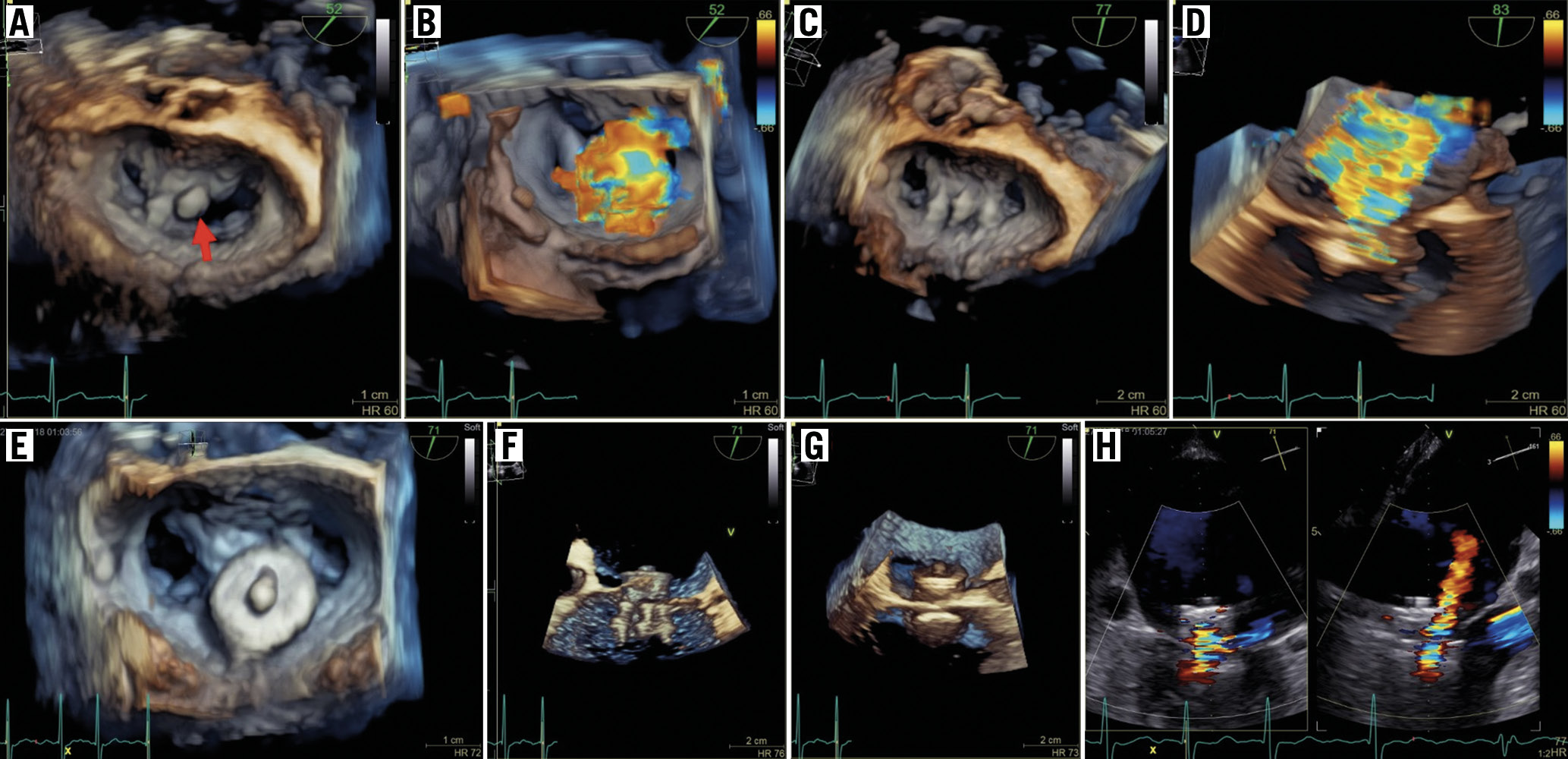
Relapse of severe mitral regurgitation after transcatheter edge-to-edge (E2E) repair is caused by annular dilatation, leaflet tear or leaflet detachment1. Commonly, repeat E2E repair is performed but results may be suboptimal. The possibility of further repair with use of vascular plugs or septal occluders has been suggested as a bail-out in difficult “no option” situations2,3.
A 63-year-old male with end-stage renal failure on haemodialysis and prior open-heart surgery was referred for symptomatic relapse of severe functional ischaemic mitral regurgitation 24 months after successful repair with two MitraClips™ (Abbott Vascular, Santa Clara, CA, USA). Three-dimensional transoesophageal echocardiography (3D-TOE) demonstrated a tear of the posterior leaflet insertion on the medial clip, resulting in loss of edge-to-edge approximation and severe regurgitation (Panel A, Panel B, Moving image 1 & Moving image 2).
Heart team discussion led to the decision for a repeat E2E repair and a third MitraClip was implanted medial to the failed device (Panel C & Moving image 3). However, despite appropriate positioning and leaflet capture, severe mitral regurgitation persisted from the area between the clips (Panel D). In addition, significant iatrogenic right to left shunting at the interatrial septum resulted in refractory hypoxaemia. After multidisciplinary discussions, it was decided to proceed with closure of the mitral regurgitant orifice with use of a vascular plug, and of the atrial septal defect with an occluder device (both procedures in same setting three days later). Following re-entry into the left atrium, a steerable guide catheter was advanced within the mitral regurgitant orifice and an Amplatzer™ Vascular Plug II (Abbott Vascular), 16 mm (size based on 3D multiplanar reconstructions of the mitral regurgitant jet vena contracta measured at 13×8 mm, Supplementary Figure 1) was implanted successfully resulting in a modest reduction in regurgitation (Panel E-Panel H & Moving image 5-Moving image 7) without stenosis (mean gradient 3.0 mmHg, Supplementary Figure 2). Before exiting the left atrium, an Amplatzer™ Septal Occluder (8 mm) (Abbott Vascular) was deployed mitigating the interatrial shunt. Postoperatively, there was marked improvement in oxygenation and haemodynamics allowing transfer out of the intensive care for further treatment of medical comorbidities.
Conflict of interest statement
The authors have no conflicts of interest to declare.

